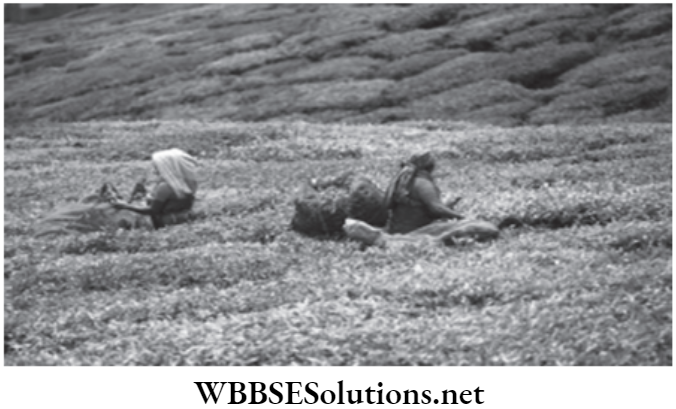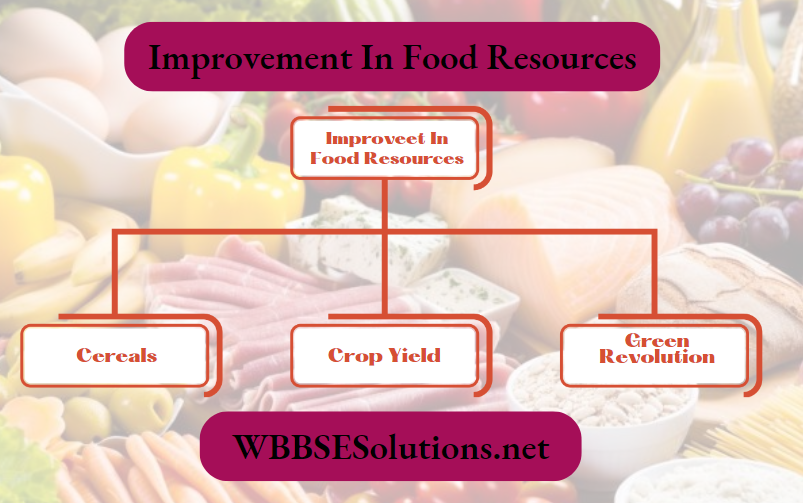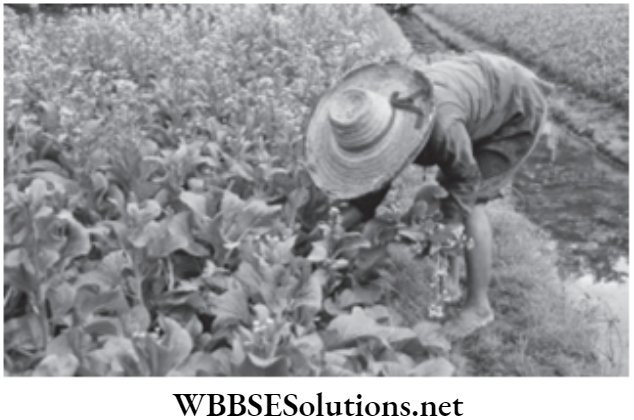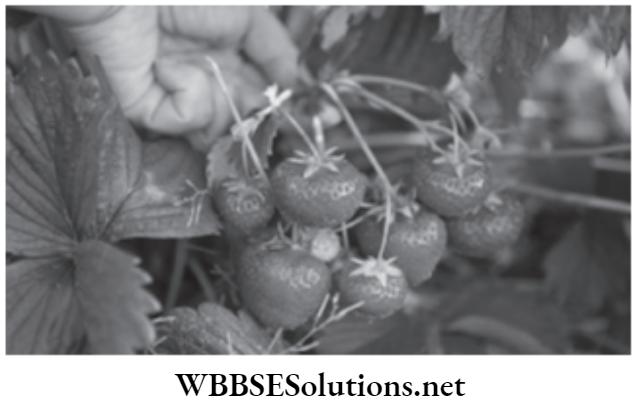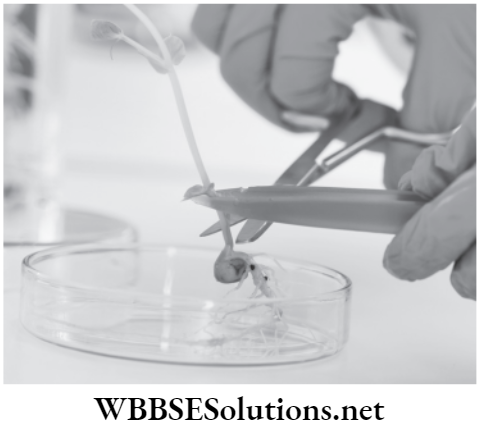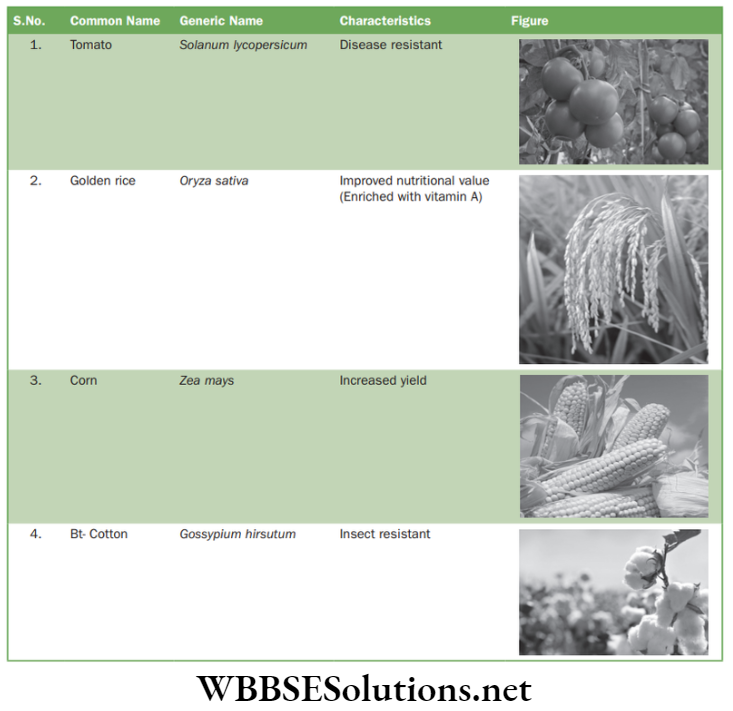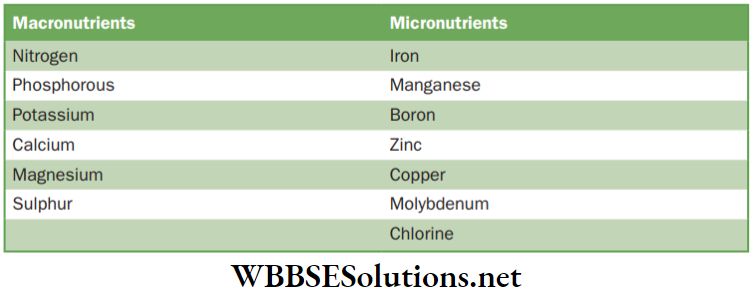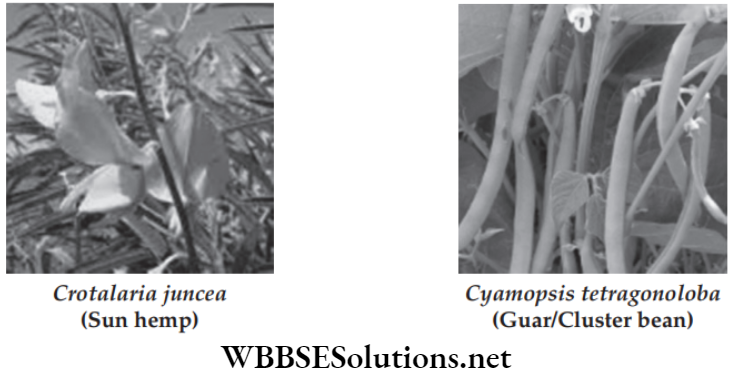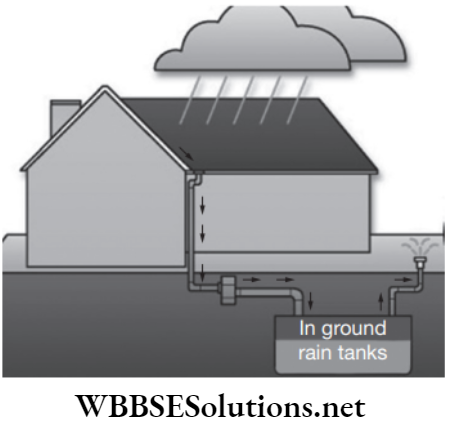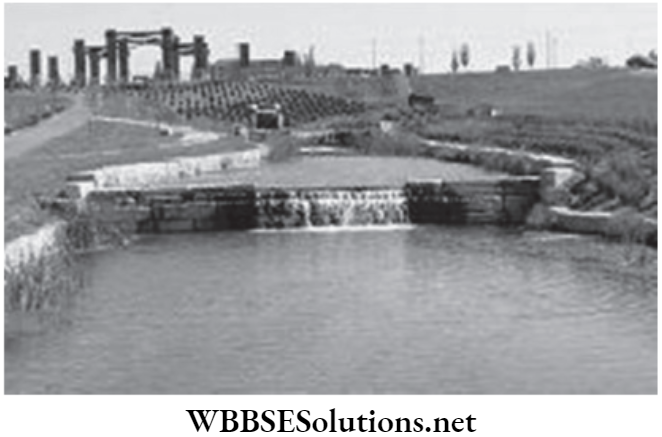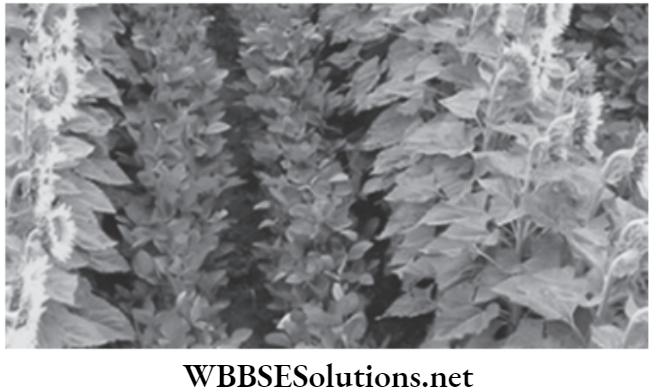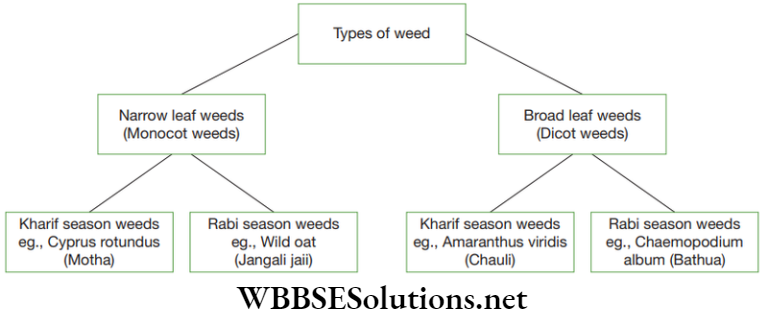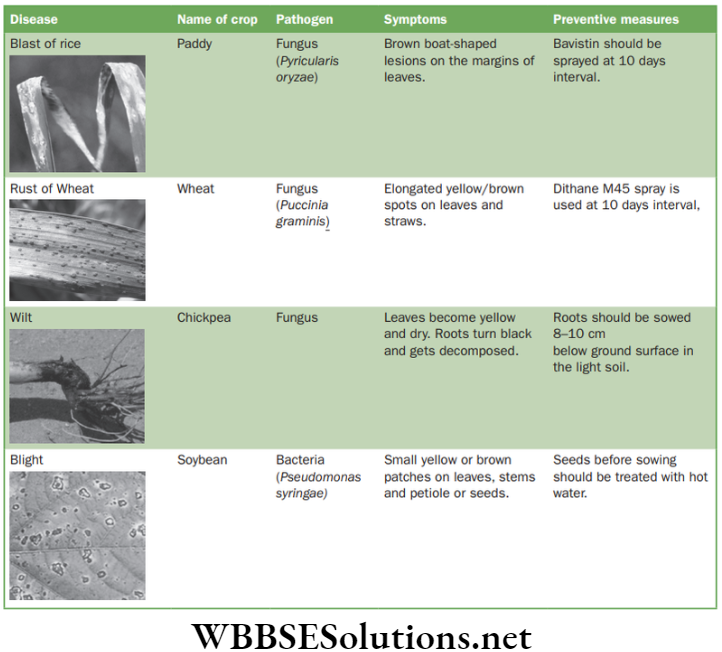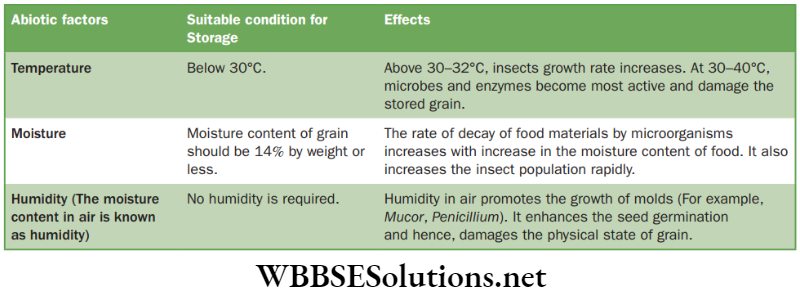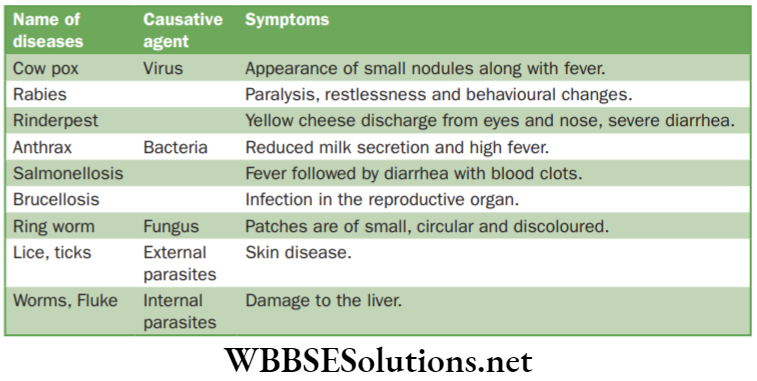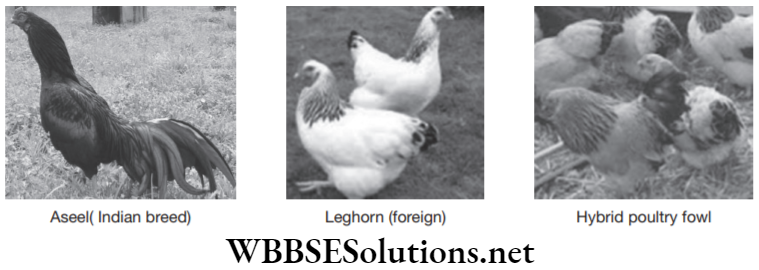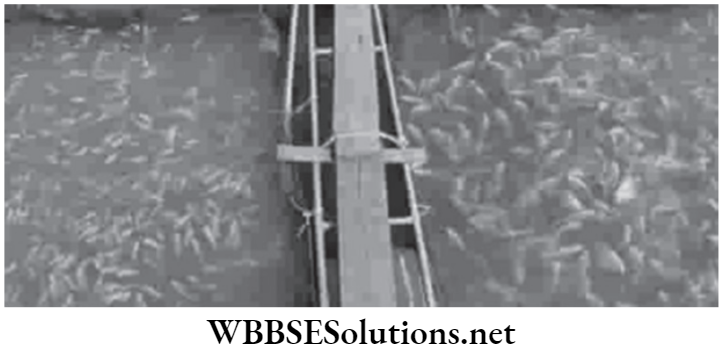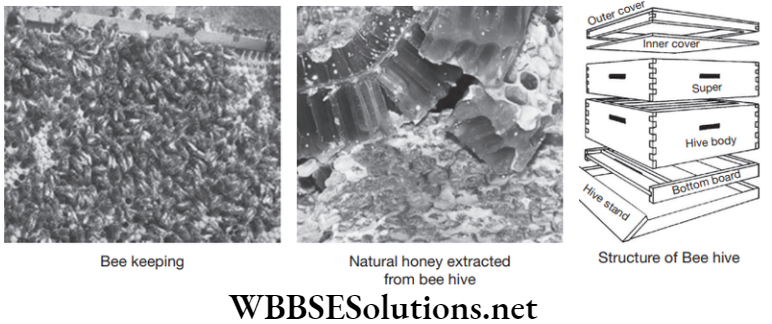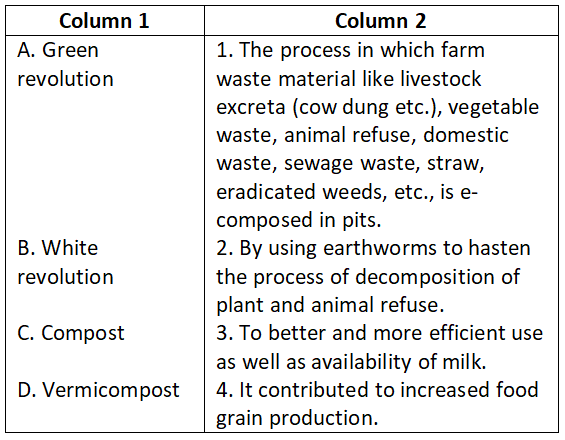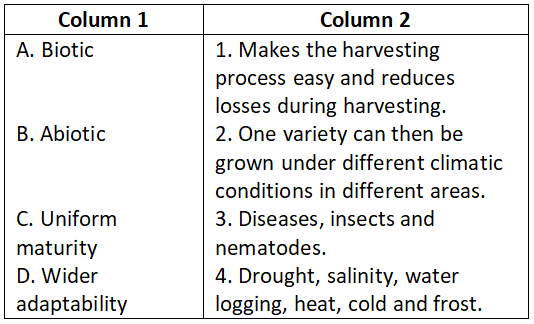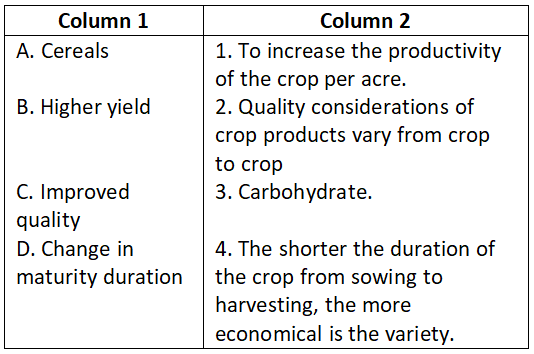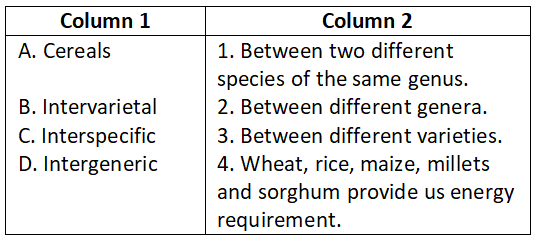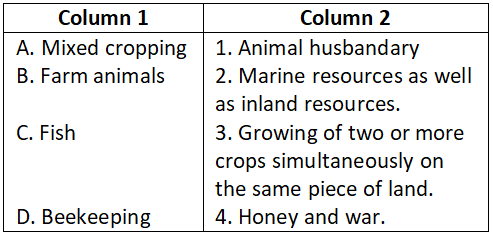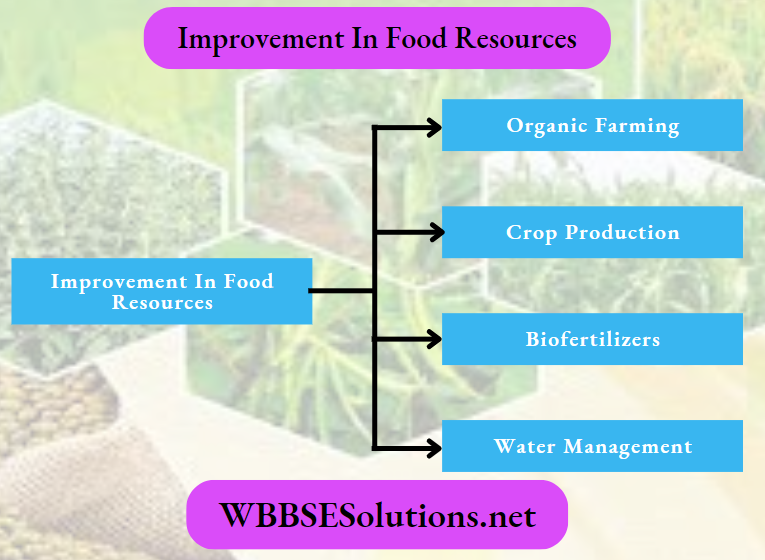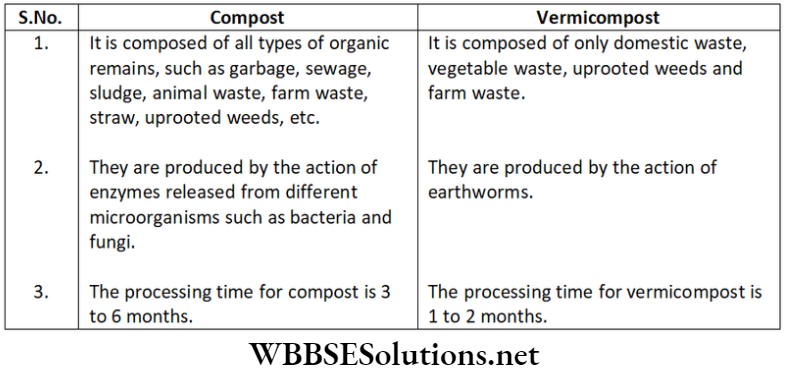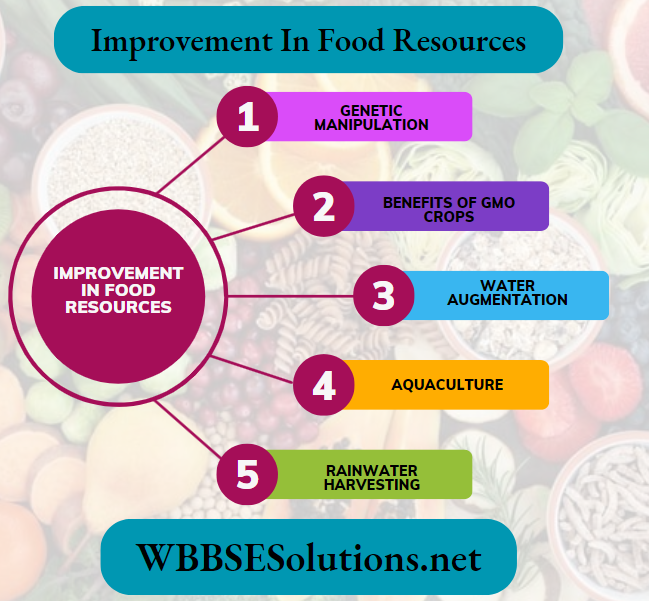Chapter 5 Natural Resources
Earth is the only planet where life exists. Everything that encompasses us acting as a life support system is termed as environment. It is the environment that provides us food to eat, air to breathe, water to drink, and fulfil our daily requirements to survive on earth.
Life on earth is dependent on a variety of factors, such as ambient temperature, water and food. The resources available on earth and the energy from the sun are the basic needs for survival of life forms on earth. Biodiversity which is the ‘Natural Biotic Capital’ of the earth is the basic component and life on the planet earth will not continue if we lose this biodiversity.
Biodiversity can be regarded as a life insurance for the life itself. Sadly, the human activities have substantially affected the biodiversity by attacking it. The disintegration and degradation of habitats across the globe is resulting in serious loss of biodiversity. There is no possibility of reversing these losses because many of the species have become extinct. India is a mega-diverse country having rich biodiversity and related traditional knowledge.
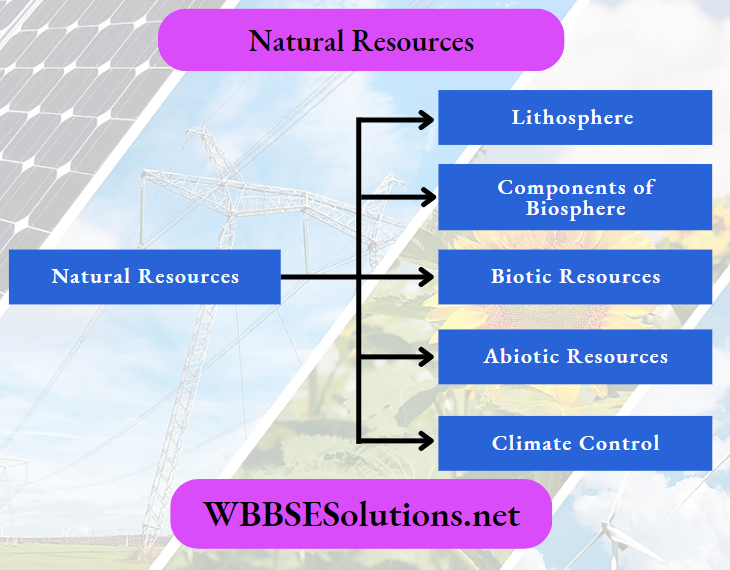
Read and Learn More: NEET Foundation Notes

Chapter 5 Natural Resources on the Earth
Living organisms are constantly exploiting the environment or the resources available to them in the environment to sustain their lives and make it more comfortable and meaningful. The various types of ecosystem that may be found in a particular region constitute a biome and several biomes on earth constitute the biosphere. Biosphere refers to the region of earth’s crust and atmosphere, which is occupied by the living organisms. It is broadly classified into three physical divisions as follows.
- Lithosphere (land): It refers to the outermost layer of the earth’s crust. It is the topmost weathered part, which leads to soil formation.
- Hydrosphere (water): It refers to the water component of the earth. Water covers 75% of the earth’s surface.
- Atmosphere (air): It refers to the multi-layered envelope of gases that surrounds the entire earth.
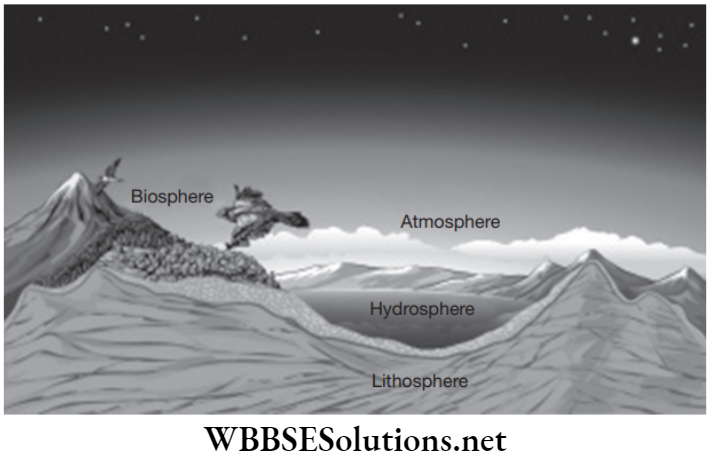
Types of Natural Resources
The term natural resources is used for all living and non-living components of nature used by humans to fulfil their daily requirements. Natural resources can be divided into two categories and they are as follows.
- Inexhaustible natural resources: Present with unlimited amounts in the nature; they cannot be depleted or exhausted by human activity.
- Exhaustible natural resources: One that gets depleted over time with increasing use, such as oil or natural gases.
Components of Biosphere
There are two types of components, such as biotic and abiotic. The biotic component constitutes all the living beings. The abiotic or non-living component of the biosphere constitutes the air, water and soil (land).
Both the components are essential to meet the basic needs of all the life forms. The energy required to support these life forms is obtained from the sun, which is further used to synthesize food for all living beings. All the abiotic components of the environment form the weather and climate of a particular area.
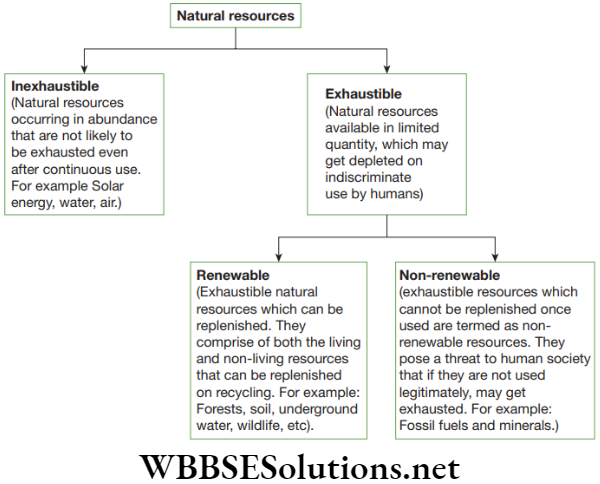
Biotic Resources
These include all the living organisms including human beings. It includes producers (green plants, autotrophs) and consumers (animals, some bacteria, fungi, viruses).
- Plants: Green plants are referred to as the producers. They provide food to all living beings. Plants in the presence of sunlight and water produce food through a process known as photosynthesis and release oxygen. Plants are of great significance due to the fact that they release oxygen. Therefore, researchers have claimed that ‘plants can survive without animals, but survival of animals without plants is difficult.’
- Animals: They are an important constituent of the biotic resources holding an unbreakable relationship with the plants. They are dependent on plant for their survival.
Abiotic Resources
Abiotic factors are the non-living parts of the environment that can often have a major influence on living organisms. Abiotic factors include water, sunlight, oxygen, soil and temperature.
- Water: An important abiotic factor – it is often said that “water is life.” All living organisms need water. Plants must have water to grow. Even plants that live in the desert need a little bit of water to grow. Without water, animals become weak and confused, and they can die if they do not rehydrate.
- Sunlight: The main source of energy on Earth, which makes it an extremely important abiotic factor. Sunlight is necessary for photosynthesis, the process by which plants convert carbon dioxide (CO2) and water to oxygen (O2) and sugar – food for the plants that later becomes food for animals.
- Oxygen: O2 is another important abiotic factor for many living organisms. Without oxygen, humans would not be able to live! This is true for the many other living organisms that use oxygen. Oxygen is produced by green plants through the process of photosynthesis, and is therefore directly linked to sunlight.
- Soil: Considered an abiotic factor since it is mostly made up of small particles of rock (sand and clay) mixed with decomposed plants and animals. Plants use theirroots to get water and nutrients from the soil.
- Temperature: An abiotic factor that is strongly influenced by sunlight. Temperature plays an important role for animals that cannot regulate their own body temperature, such as reptiles.
Chapter 5 Natural Resources Track Your Learning Question And Answers
Question 1. An inexhaustible resource is ______.
- Soil
- Minerals
- Solar energy
- Fossil fuels
Answer. 3. Solar energy
Question 2. Which of the following(s) is a constituent of SPM?
- Dust
- Smoke and soot
- Fly ash
- All the above
Answer. 4. All the above
Question 3. Air is a mixture of
- nitrogen, oxygen, carbon monoxide, water vapour
- nitrogen, carbon dioxide, oxygen, carbon monoxide
- nitrogen, oxygen, methane, carbon dioxide
- nitrogen, oxygen, water vapour, carbon dioxide
Answer. 4. nitrogen, oxygen, water vapour, carbon dioxide
Question 4. Green plants in an ecosystem are referred to as
- Consumer
- Producer
- Decomposer
- None of the above
Answer. 2. Producer
Question 5. Which of the following is not a renewable resource?
- Soil
- Minerals
- Forests
- Underground water
Answer. 4. Underground water
Chapter 5 Natural Resources The Breath of Life: Air
Air is a mixture of various gases along with water vapour and suspended particles. It contains oxygen, carbon dioxide, nitrogen, water vapour, suspended particles and other gases like argon in minute quantities.
Living beings require oxygen for the breakdown of glucose molecules to produce energy, which leads to the formation of carbon dioxide.
Combustion is another process that utilizes oxygen and results in the release of carbon dioxide.
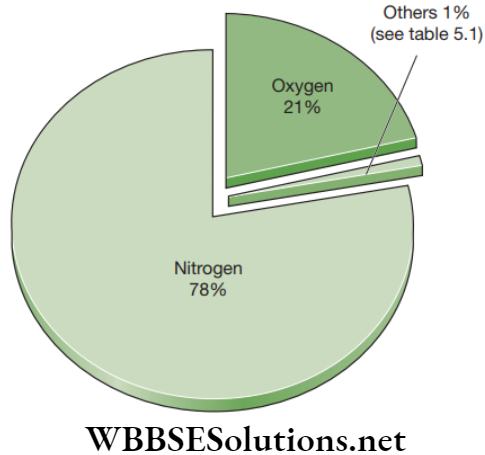
Composition of gases in the air
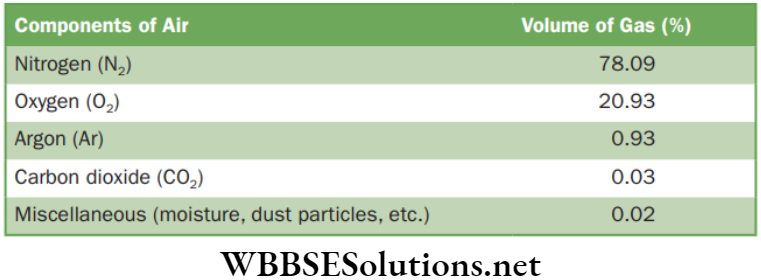
Importance of Atmosphere
The Role of the Atmosphere in Climate Control
Atmosphere acts as a blanket around the earth. Air in the atmosphere is inexhaustible and a bad conductor of heat. Thus, it helps to keep the average temperature of the earth steady during day and night preventing the sudden increase in temperature during day.
During night, the escape of heat from the surface of earth into outer space slows down. Moon lacks earth-like atmosphere resulting in the variation of temperature during day and night. The average range of temperature on the surface of moon is as hot as 110°C (during day) and as cool as –190°C (during night).
Urban heat island effect refers to the fact that air in urban areas can be 2–3°C warmer than air in the nearby rural areas. Also, it may influence the weather, rate of precipitation, formation of clouds and change in wind patterns.
The Movement of Air: Winds
Hot summer day followed by cool breeze and monsoon brings relief to a number of people. But, have you ever thought what causes the movement of air? What factors lead to a gentle breeze or transform it to a strong wind or a terrible storm? How does rain occur?
The above mentioned phenomenon takes place as a result of variation in the atmosphere observed due to heating of air and formation of water vapours. The movement of air from one region to another leads to the formation of wind. The sun rays received by earth are either absorbed or reflected back or re-radiated by the land and water bodies.
The reflected or reradiated radiations cause the surface of earth to heat from below, resulting in the formation of convection currents. Due to the fact that land gets heated at a faster rate as compared to water, the air over land also gets heated at a faster rate.
Factors Influencing Movement of Air
Factors responsible for diverse types of atmospheric phenomenon, such as breeze, monsoon rains, cyclones, storms, etc., are as follows.
- Rotation of the earth
- Uneven heating of land
- Difference in the rate of heating and cooling over land and water bodies
- Condensation and vaporization of water vapour
- Difference in topography
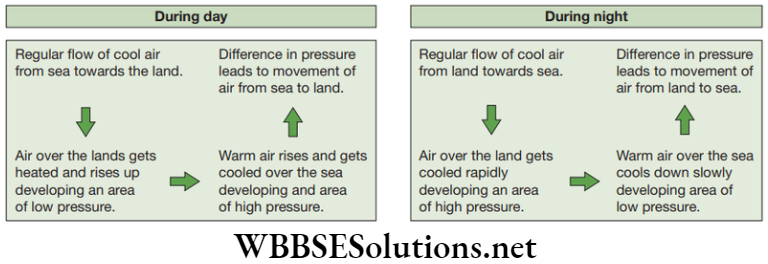
Let us perform the following activity to gain knowledge about development of convection currents. The patterns depicted by the direction of smoke reveals the direction in which the hot and cold air moves. It is observed that the air above the burning candle gets heated rapidly and rises up, developing a region of low pressure below.
As a result, air from the adjacent cold regions move towards hotter region having low pressure. Let us take an example of coastal areas to illustrate the phenomenon where air above the land gets heated up at a faster rate.
The movement of air follows a spiralling path, outwards from high pressure towards low pressure due to rotation of earth beneath the moving air. It results in an apparent deflection of wind; right in the Northern Hemisphere and left in the Southern Hemisphere.
Rain
During day, the temperature of water bodies rises resulting in the evaporation of water in the form of small droplets of water vapour. A portion of water is also extracted from plants through transpiration, which further enters the atmosphere. The air carrying water vapour gets heated and rises up. This process is followed by cooling and expansion, which leads to the condensation of water vapour in the presence of dust and other suspended particles.
Once the water droplets are formed, they grow bigger and bigger to form an enormous collection of tiny droplets. These droplets on condensation become heavy and falls down in the form of rain.
Chapter 5 Natural Resources Air Pollution
The addition of air pollutants such as particulate matter, vapour and gases into the atmosphere causing adverse effect on humans and human assets, vegetation and animals is termed as air pollution. It is often heard through press releases that air quality in metro cities is degrading day by day due to increased rate of pollution.
The question that arises each day is how do we access the air quality? What are the factors leading to air pollution? What is the evidence to prove the presence of air pollution? Let us cover each of them one by one.
The two types of air pollution are discussed below.
- Natural: It includes pollution caused by pollen, forest fire and dust storms, etc.
- Man-made: It includes pollution caused by vehicles, burning of fossil fuels, emission of gases from industries, etc.
The particulate pollutants of the air are also known as suspended particulate matter or SPM, which consists of soot (black powdered substance produced on burning of coal, wood, etc.), smoke, fly ash and dust.
The types of air pollutants are as follows.
- Gases: Nitrogen dioxide, hydrogen cyanide, carbon monoxide, sulphur dioxide, hydrogen fluoride, chlorine, methane and ammonia.
- Vapours: Unburnt hydrocarbons (benzene).
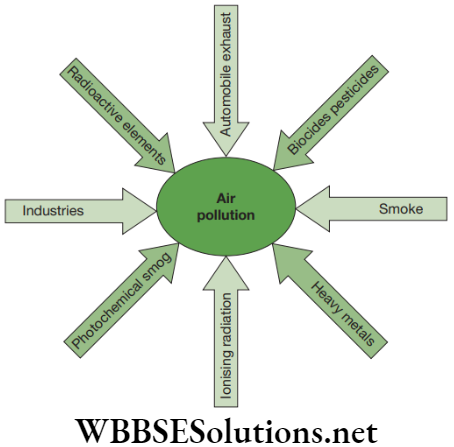
Harmful Effects of Air Pollution
- Asthma, allergic cold and bronchitis are caused by increased concentration of SPM.
- Irritation in eyes, lungs and throat are caused, which in severe cases may lead to terminal cancer.
- Damage to internal organs caused by vapours are produced by hydrocarbons.
Smog
It is a dark brown or greyish smoky mist or photochemical haze produced due to the action of ultraviolet radiations. Smog is produced when atmosphere is polluted with the primary pollutants, which includes hydrocarbons and oxides of nitrogen released from variable sources including automobile exhaust. It not only leads to reduced visibility, but may result in suffocation.
The atomic oxygen reacts with hydrocarbon to produce radicals, which on combination with O2, NO2 and hydrocarbons lead to the formation of secondary pollutants. These secondary pollutants are aldehydes, formaldehydes and peroxyacetyl nitrate (PAN). According to the Central Pollution Control Board (CPCB), the Air Quality Index (AQI) touched the figure of 494 in Delhi NCR region since late October 2016.

Water: A Wonder Liquid
It is evident that 70% of our earth is covered with an inexhaustible natural resource, water. Then, why should we be concerned about water? Water can be found everywhere in the lakes, rivers, ponds, oceans, soil, underground and even in the atmosphere as water vapours. But, how much of it is actually available for human consumption?
A major part of earth comprises of oceans covering about 97.5% of the total water, 1.9% is occupied as ice-caps, 2.5% is present on the land, while the remaining 0.6% of the total water is available as fresh water, which supports life on earth. Rainfall is the source of freshwater. More than 90% of the fresh water is available as ground water while the remaining 10% is available as either surface water (from rivers, dams, ponds, lakes) or soil water or water vapours.
But why is it so important? Water is essential for the maintenance of all life forms present on earth. All cellular processes require water as one of the key ingredients for the reactions to take place within cells and also to transport substances from one part of the body to another.
Therefore, constant water level is required to be maintained by all organisms to survive. Besides being a key agent in the formation of soil, it is also used by humans for various purposes, such as drinking, washing, irrigation, disposal of wastes and various other purposes.
Water Pollution
It is defined as the undesirable change in the physical, chemical, or biological properties of water due to addition of pollutants that make water unfit for human consumption. The three types of water pollution are surface water or inland, underground water and marine water pollution. It is remorseful to state that humans are the major cause of water pollution. However, some part of pollution takes place naturally.
Types of Water Pollutants
Water pollutants are the substances or agents that cause water pollution. It can be broadly classified into three categories as follows.
- Physical pollutants: It includes thermal pollution caused by heat and oil-spills.
- Chemical pollutants: It includes organic wastes, such as sewage, fertilizers, pesticides (DDT, DDE, BHC, etc.), PCBs (Polychlorinated biphenyls), detergents, inorganic chemicals (lead, nickel, mercury, arsenic, nitrates, fluorides, cadmium, etc.), inorganic impurities, such as calcium and magnesium, and radioactive wastes.
- Biological pollutants: Viruses, protozoa, fungi, nematodes, bacteria, helminthes, etc.

Harmful Effects of Water Pollution
- Biological pollutants such as viruses, bacteria, etc., cause diseases such as cholera, dysentery, jaundice, typhoid and hepatitis.
- These pollutants may stimulate the growth of some organisms while affecting the others thereby, disturbing them between different organisms.
- The increased amount of organic wastes in water bodies promotes the growth of bacteria using up a large proportion of the available oxygen. This leads to the death of the marine animals due to lack of oxygen. This process is termed as eutrophication.
- Industrial waste containing high amount of acids, alkalis and heavy metals cause an adverse effect on the marine life.
- The decomposition of organic wastes requires oxygen. However, in case of low concentration of oxygen, anaerobic breakdown of organic matter takes place producing pollutants, such as ammonia, methane, organic sulphides, methyl sulphides, hydrogen sulphide. This makes the water turbid and odorous.
Biomagnification
It is also known as food chain magnification in a manner that organisms present at the top of the chain contains harmful chemicals, such as DDE, DDT, methyl mercury, etc. They may affect the organisms that feed on them. For example, Minimata disease in fish-eating population is a result of biomagnification of mercury in fishes.
Bioaccumulation
It is the term used for storage of pollutants in the body tissues of humans and animals (fats, kidney, bone, etc.) at a higher concentration than found in the environment. For example: In Japan, the population eating rice produced from soil containing high concentration of cadmium suffered from a disease called Itai Itai.
Conservation and Management of Natural Resources
Despite being blessed with bountiful rainfall, India often faces water scarcity. During scorching heat of summers, the level of water goes down. In such frequent cases water crisis has led to the enforcement of various means of water conservation and they are as follows.
- Adoption of food control methods.
- Avoid wastage and overuse of water.
- Groundwater recharging through artificial means.
- Development of integrated water shed plans.
- Transfer of surplus water to regions that are water deficit.
Rain Water Harvesting
The amount of water received as rain cannot percolate through hardened soil and it flows down to rivers and sea without replenishing underground water tables. The technique of rain water harvesting is used to capture, hold and reutilize rain water by constructing structures, such as percolation pits, check dams, dug-out wells and lagoons.
The failure to develop a centralized water distribution has led to the emergence of two new techniques known as rain water harvesting and ground water recharge projects.
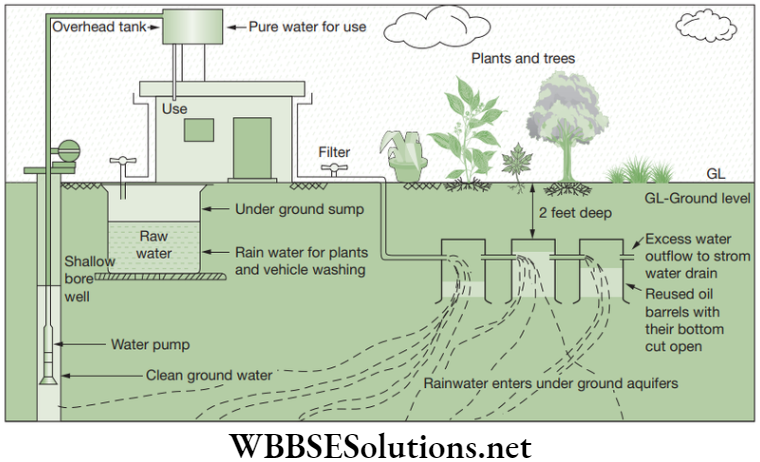
Rain water harvesting is carried out in several steps, which involves the collection of rain water, its storage, and subsequent use at the time of scarcity. In water stressed areas, the technique is adopted to store meagre quantity of water into huge storage tanks and vessels. This stored water serves to fulfil the demand of population during most of the year.
Advantages of Rainwater Harvesting
- Checks soil erosion.
- Raise water table.
- Maintains supply of water during months of the year.
- Control floods.
- Reduce loss of water through run-off.
Chapter 5 Natural Resources Master Your Test Question And Answers
Question 1. What is the major source of fresh water in the city/town/village where you live?
Answer: The major sources of water are as follows.
- Water in the form of snow, ice-covered mountains.
- Underground water well.
- Surface water like in lakes, rivers, ponds.
- Rainfall.
- Stored rain water in tanks, dams.
Question 2. Do you know of any activity which may be polluting this water source?
Answer: Yes, the water is polluted by (a) sewage (b) dumping waste in river, (c) factory waste, etc.
Question 3. Why do organisms need water?
Answer: Organisms need water for the following activities.
- All cellular processes occur due to water.
- Transportation of substances in our body takes place by dissolving in water.
- Terrestrial animals require fresh water for transportation of minerals and for getting rid of waste from their body.
- Plants require water for photosynthesis.
Question 4. Why is water essential for life?
Answer:
- About 70% weight of human being is due to water.
- All cellular processes takes place in water as medium.
- All reactions takes place within our body and within the cells occur between substances that are dissolved in water.
- Tansportation of substances from one form to another takes place due to water.
- Terrestrial life forms require fresh water for the transportation of substances and to get rid of high amounts of wastes.
Question 5. What is the greenhouse effect?
Answer: Gases like CO2 and methane trap sun’s radiation and don’t allow it to go back. This causes warming of atmosphere. This effect is called greenhouse effect.
Question 6. What are suspended particulate matter?
Answer: The particulate pollutants of the air are also known as suspended particulate matter or SPM, which consists of soot (black powdered substance produced on burning of coal, wood, etc.), smoke, fly ash and dust.
Question 7. Name the three types of air pollution.
Answer: The three types of water pollution are surface water or inland, underground water and marine water pollution.
Question 8. What do you understand by the term bioaccumulation?
Answer: It is used for storage of pollutants in the body tissues of humans and animals (fats, kidney, bone, etc.) at a higher concentration than found in the environment.
Chapter 5 Natural Resources Track Your Learning Questions and Answers
Question 1. Greenhouse gases are caused by which of the following?
- Industries
- Rhizobium
- Lightening
- All the above
Answer. 4. All the above
Question 2. Nitrogen fixation can be done by which of the following?
- Industries
- Rhizobium
- Lightening
- All the above
Answer. 4. All the above
Question 3. On moon, the temperature ranges from –190° C to 110° C. This effect occurs due to which of the following?
- No water bodies present
- Water bodies present.
- No biogeochemical cycle.
- No atmosphere
Answer. 4. No atmosphere
Question 4. Depletion of ozone molecules in the stratosphere is due to which of the following?
- Chlorine compound
- Fluorine compound
- Halogen compound
- None of these
Answer. 3. Halogen compound
Question 5. According to central pollution control board, particles that are responsible for causing great harm to human health are of the diameter
- 2.50 µm
- 5.00 µm
- 10.00 µm
- 7.5 µm
Answer. 1. 2.50 µm
Question 6. Metal generally present in polluted air is
- cadmium
- lead
- mercury
- zinc
Answer. 2. lead
Question 7. Pollutants emitted by jet aeroplanes in outer atmosphere fluorocarbon are known as
- smog
- photochemical oxidants
- aerosols
- loess
Answer. 3. aerosols
Question 8. Acid rain is rainfall with a pH of
- 7
- 6.56
- 5.65
- 11
Answer. 3. 5.65
Question 9. Algal bloom in a lake
- increases the carbon dioxide level
- leads to oxygen depletion
- kills fishes
- all of these
Answer. 4. all of these
Question 10. Water pollution is best assessed by determining the
- DO
- BOD and turbidity.
- DO and acidity.
- hardness and alkalinity.
Answer. 2. BOD and turbidity.
Chapter 5 Natural Resources Mineral Riches in the Soil
Soil is regarded as one of the most important resources, which decides the diversity of life in a particular area. But what is it? How is the soil formed? Soil is described as the earth’s portion that comprises of the disintegrated rocks and decaying organic material, which supports the life of plants and animals. Its thickness ranges from a few millimetres to 3–4 meters.
Formation of Soil
Soil is formed by two processes, namely weathering and paedogenesis.
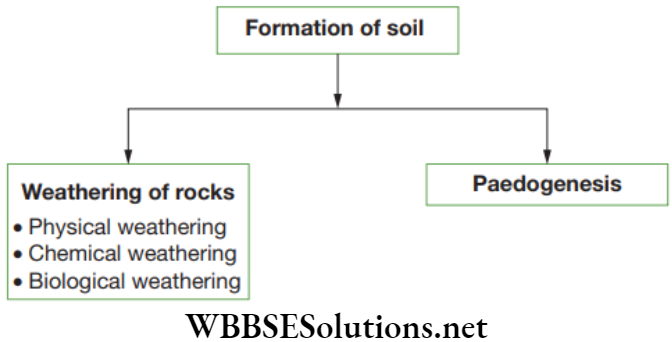
Weathering
The process of breakdown of huge rocks into smaller particles is known as weathering. It takes place in three ways as discussed below.
- Physical weathering: Factors that contribute to physical weathering include temperature, rain water, wind, ice, glaciers, snow and running water. The roots of the plants also play a crucial role in weathering by penetrating into the crevices of the rocks. Example: The freezing of water leads to the expansion of water in the rock crevices, which leads to the breakdown of rocks.
- Chemical weathering: It is carried out by chemical processes, such as hydrolysis, oxidation, reduction and hydration. Example: The acidic components derived from decaying of organic matter and carbonic acid present in water leads to the breakdown of complex compounds. The by-product of chemical breakdown includes clay, inorganic salts, silica and hydrated oxides,
- Biological weathering: The breakdown of complex substances by living organisms, such as lichens and bryophytes is termed as biological weathering. Example: Lichens grow on the rocks to extract minerals creating crevices at places where a thin layer of soil is formed. Mosses grow over the crevices thus created and deepens them leading to the formation of deeper crevices, where roots of herbs pass and become large with the passage of time. This causes fragmentation of rock eventually leading to weathering.
Soil Profile
It represents the vertical section of the crust of the earth. It comprises of subsequent horizontal layers known as horizons. These horizons can be distinguished on the basis of colour, texture, thickness, structure, porosity, acidity, consistency and composition.
- A-horizon: It is the top soil comprising of humus and litter.
- B-horizon: It comprises of mineral soil.
- C-horizon: It comprises of unconsolidated parent material.
- D-horizon: It comprises of unmodified parent material orrocks.
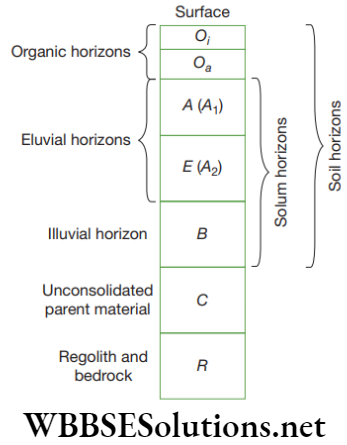
Composition of Soil
The top layer of the soil comprises of four different types of rock particles differing in their look, texture and size.
- Gravels: Large particles measuring greater than 2 mm in diameter that can be hand-picked.
- Sand particles: Coarse particles ranging in size of 0.05 mm to 2.00 mm that can be seen by naked eye.
- Silt particles: Soil particles measuring between ranges from 0.005 to 0.05 mm.
- Clay particles: Smallest soil particles measuring less than 0.005 mm.

Types of Soil
Based on the amount and type of particles in the soil, it is divided into three categories and they are as follows.
- Sandy soil: It is found in deserts comprising of large amount of sand particles. It cannot hold much water.
- Clayey soil: It comprises of clay particles with a small amount of silt and humus. It is compact and capable of holding water.
- Loamy soil: It comprises of silt, clay and humus having good water holding capacity. It is porous to provide aeration to the roots.
In India, based on the perspective of agriculture, soil can be divided into the following categories.
- Residual soil: It is found at the place of soil formation and it can be further divided as follows.
Characterstics of residual soil

- Transported soil: It gets displaced and settles in regions away from its origin due to either or a combination of the following causes.
-
- Flowing water
- Gravity
- Wind or glacier
The transported soil is classified into the following three types.
Characterstics of transported soil

Soil Erosion
It is defined as the removal and transportation of top layer of the soil through strong winds and running water.
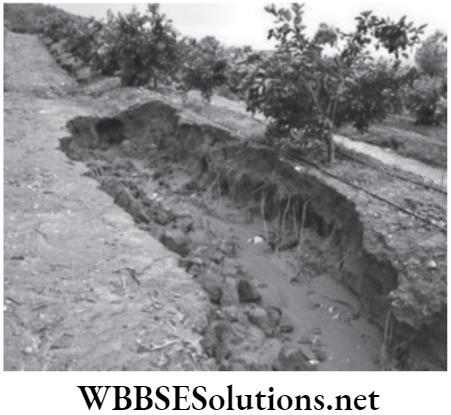
Causes of Soil Erosion
The factors responsible for the occurrence of soil erosion are as follows.
- Strong winds
- Heavy rains
- Human activities such as expansion of urban areas
- Dust storms
- Frequent floods
- Improper farming and suspended cultivation
Effects of Soil Erosion
- The displacement of top, fertile layer of the soil from one place to another leads to the reduction in fertility of the soil.
- Landslides as a result of soil erosion results in the destruction of dwellings in the hilly areas.
- Heavy rains leads to rapid movement of the water resulting in floods. This causes enormous loss of life and property.
- The textural changes resulting from soil erosion leads to the removal of top, fertile layer thereby, reducing water holding capacity of the soil. This makes the soil dry resulting in famines.
- The runaway of top soil clogs drain and other water channels due to deposition of silt. The deposition of silt pollutes water and reduces water level in the reservoirs.
Prevention of Soil Erosion
- To make use of intensive cropping which protects top soil from the exposure of winds or water.
- Sowing grasses on barren lands helps to bind the loose soil.
- Construction of small bunds (embankments) known as contour bunding raises the edges of fields thereby, preventing soil erosion.
- Practice of reduced or no tillage.
- Constructing proper drainage canals to remove excess of rain water from the fields.
Soil Pollution
It is known that soil pollution is caused by solid wastes and chemicals. Some sources of soil pollution are discussed as follows.
- Pulp and paper mills.
- Sugar mills
- Oil refineries and power plants.
- Domestic wastes (food scraps, cans, rags, ash, broken gadgets, etc.)
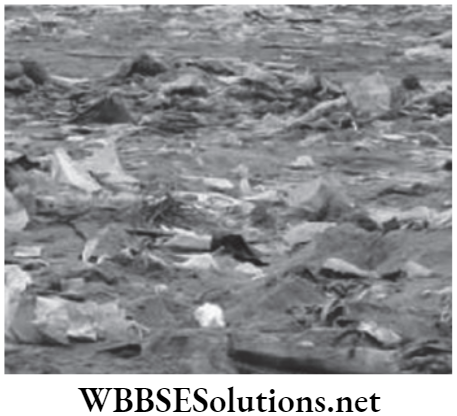
Chapter 5 Natural Resources Master Your Test Questions and Answers
Question 1. What is soil erosion?
Answer: The removal of top soil by air and wind water is called soil erosion.
Question 2. What are the methods of preventing or reducing soil erosion?
Answer: The methods to reduce soil erosion are as follows
- Soil should have some vegetations like grass growing on it, so that it does not get carried away by rain water or wind.
- Afforestation or planting of trees, so that roots hold the soil and prevent soil erosion.
Question 3. Discuss the various sources of soil pollution.
Answer:
- Pulp and paper mills.
- Sugar mills
- Oil refineries and power plants.
- Domestic wastes (food scraps, cans, rags, ash, broken gadgets, etc.).
Question 4. What do you understand by soil profile?
Answer: It represents the vertical section of the crust of the earth. It comprises of subsequent horizontal layers known as horizons. These horizons can be distinguished on the basis of colour, texture, thickness, structure, porosity, acidity, consistency and composition.
Question 5. What is weathering?
Answer: The process of breakdown of huge rocks into smaller particles is known as weathering.
Question 6. What is paedogenesis?
Answer: This process results in the humification and mineralization due to breakdown of organic matter because of the decomposition of microorganisms such as bacteria and fungi.
Question 7. What is biological weathering?
Answer: The breakdown of complex substances by living organisms, such as lichens and bryophytes is termed as biological weathering.
Chapter 5 Natural Resources Track Your Learning Questions and Answers
Question 1. Which of the following is not a factor responsible for the occurrence of soil erosion?
- Dust storm
- Heavy rains
- Cyclones
- Flood
Answer. 3. Cyclones
Question 2. Which of the following is not a property of alluvial soil?
- Layered
- Contains smooth round particles
- Rich in humus
- Suitable for growing pulses
Answer. 4. Suitable for growing pulses
Question 3. Measurement of clay particles in soil is about ___________.
- 0.5 mm
- 0.05 mm
- 5 mm
- 50 mm
Answer. 2. 0.05 mm
Question 4. The breakdown of complex substances by living organisms, such as lichens and bryophytes is termed as
- biological weathering
- chemical weathering
- physical weathering
- paedogenesis
Answer. 4. paedogenesis
Chapter 5 Natural Resources Biogeochemical Cycles
There is a constant interaction between both biotic and abiotic components of the biosphere to establish a stable ecosystem. The interaction of components involves transfer of energy between various components of the ecosystem.
The term ‘biogeochemical’ is described as the uptake of nutrient elements from the surface of the earth by living organism to perform vital functions such as growth and metabolism. These nutrients are recycled from time to time and the transfer of nutrient element between living and non-living components is termed as biogeochemical cycle of matter.
The term is ‘biogeochemical cycle’ which is made up of three word ‘bio’ meaning life, ‘geo’ meaning earth or rocks, soil, air and water of the earth, and ‘cycle’ meaning again and again.
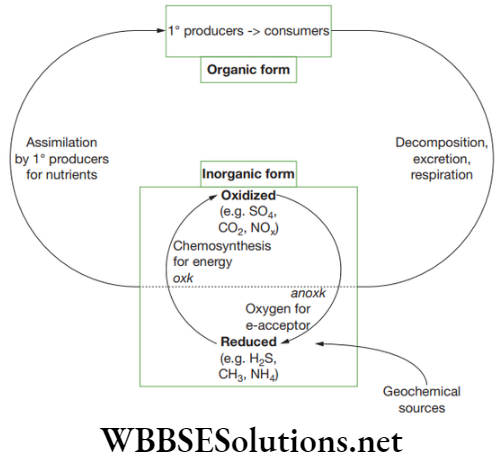
It is also referred to as the’nutrient cycle’. Each nutrient cycle comprises of two basic divisions and they are as follows.
- Reservoir pool: It comprises of large, slow-moving and mostly non-biological components.
- Labile or cycling pool: It comprises of a smaller yet active proportion of the components that are exchanged between organisms and their immediate environment.
There are three aspects of the nutrient cycles and they are as follows.
-
- Nutrient input: The nutrients received from external sources are stored for future use.
- Nutrient output: The nutrients leaving the ecosystem become the input for another ecosystem.
- Internal nutrient cycling: Soil acts as a reservoir of nutrients. The nutrients regenerated by decomposers, fungi, and actinomycetes through the decomposition of dead or partially decomposed plants and animal matter are stored in the soil.
Let us discuss a few nutrient cycles that are involved in maintaining the dynamic state of the system.
Water Cycle
The component that distinguishes earth from other planets is the availability of water, which supports all life forms on earth. Water is continuously exchanged between various components of earth and it consists of two overlapping cycles in the nature: The larger global cycle and the smaller biological water cycle that involves living systems.
Global Water Cycle
Water from water bodies evaporates to form clouds which are blown over the land through winds. On cooling, water falls on the earth in the form of hail, sleet and snow by a process known as precipitation. Rain may fall either directly into the water bodies or may get soaked into the ground. However, a major portion of water flows in rivers and returns to the seas. The collected water gets evaporated again from the reservoirs or ground to form through evaporation. The repeated cycle completes the global water cycle.
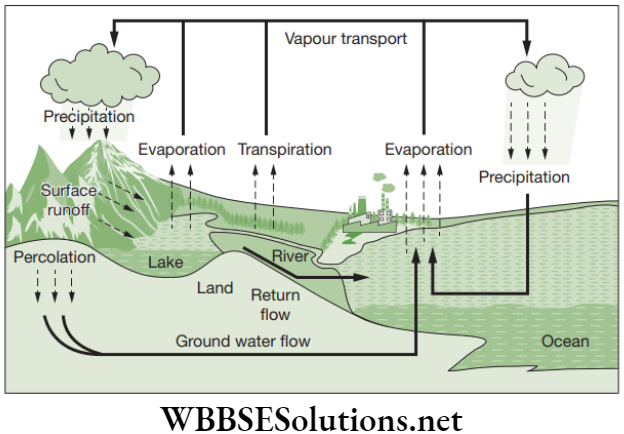
Biological Water Cycle
Water received by organisms through global water cycle is eventually returned to it. The water from the soil or reservoir is absorbed by the roots of the plants which returns to the environment in the form of water vapour through transpiration. The water thus returned to the environment, assists to cool the surrounding air and it plays a vital role in determining the microclimate.
On the other hand, animals consume water from either water bodies or in the form of food, which is returned to the environment as vapours through respiration or to the soil as excreta. Mammals also contribute to this cycle by excreting water as sweat. Water from the above-mentioned resources is added to the global water cycle. Rain adds the stored water to the land and reservoir for future use. This completes the biological water cycle.
Water, being a universal solvent is capable of dissolving a variety of substances. As water is transported from place to place and over the rocks, it dissolves essential nutrients, and soluble minerals in it, which are deposited at distant places.
There are two aspects of the water cycle that require special emphasis and they are as follows.
- According to current reports, more water evaporates from the sea than what is returned to it through rainfall. The condition is reversed in case of land.
- Human activities such as ditching and diking rivers, deforestation, paving over the earth, and compact agricultural soil act as an obstruction in recharging groundwater.
Nitrogen Cycle
Nitrogen is an important chemical component of all living organisms. It is present in the form of proteins, amino acids and nucleic acids. Nitrogen exists in both molecular form as (N2) or as oxides.
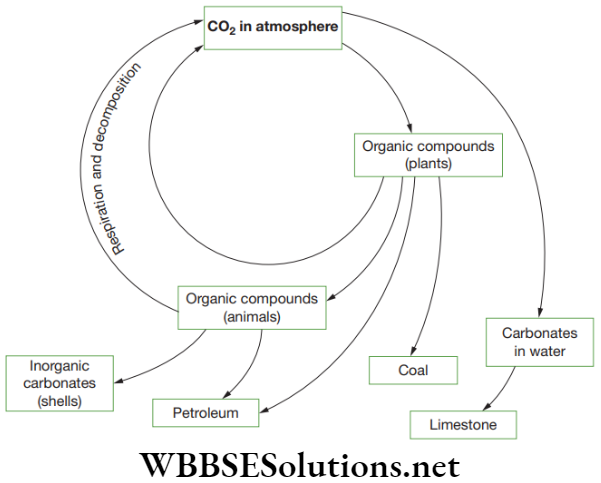
Nitrogen being inert in nature cannot be used in its pure form. Thus, nitrogen needs to be converted into nitrates and nitrites to be used up by living organisms. However, no living organism except a few bacteria are capable of converting it. The process of conversion is carried out either by industrial nitrogen fixation or nitrogen-fixing bacteria like Azotobacter and Rhizobium.
These organisms convert atmospheric nitrogen into nitrates, which is the water-soluble form of nitrogen. This process of fixation is termed as nitrogen fixation. At the time of lightning, the atmospheric nitrogen reacts with oxygen to form dilute nitric acid, which is received by earth in the form of acid rain.
Nitrates are absorbed by plants to make organic matter (proteins), which are further consumed by animals. The excreta of animals contain urea or uric acid or when an animal dies, bacteria perform ammonification (production of ammonium ions from nitrogen-containing molecules). The ammonium ion assimilated in the plants is further converted into nitrate by a process known as nitrification.
The term ‘ammonification’ refers to the process of ammonia formation. Microbes such as Nitrosomonas and Nitrobacter assist in the conversion of ammonia into nitrates by nitrification. To replenish the amount of nitrogen in the atmosphere, certain bacteria like pseudomonas help in the reduction of nitrates back to the nitrogen or ammonia form or to some other oxides by the process known as denitrification. Thus, the free nitrogen obtained is returned and the atmospheric pool is taken up by the plants.
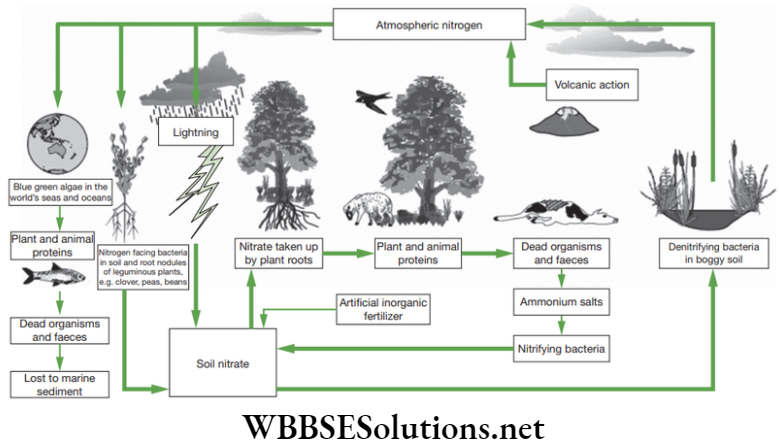
List of organisms involved in nitrogen fixation
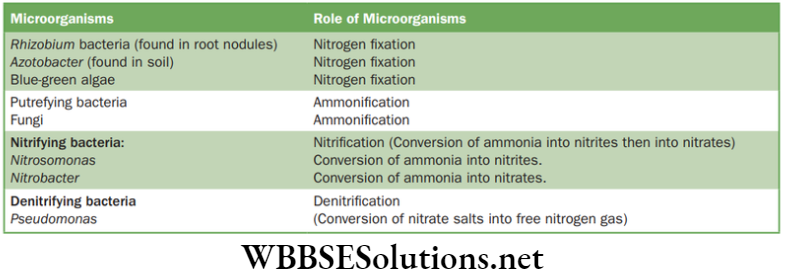
Oxygen Cycle
Air comprises 21 per cent of oxygen, an important constituent of water. Oxygen enters the system through respiration, which oxidizes food to release carbon dioxide and energy.
C6H12O6 + 6O6 → 6CO6 + 6H2O + Energy
The carbon dioxide released by respiration is utilized by plants to produce food materials through photosynthesis.
6CO2 + 6H2O + Light Energy → C6H12O6 + 6O2
The oxygen released during photosynthesis can be used up again in the process of respiration or it may return to the environment in the form of molecular oxygen. The rate of oxygen released during photosynthesis and the rate of oxygen utilized during respiration remains constant.
The decomposition of dead organic matter also releases partial oxygen in the form of CO2. On the other side, the burning of fossils also releases a part of oxygen in the atmosphere as carbon dioxide, water, sulphur dioxide and nitrogen oxides.
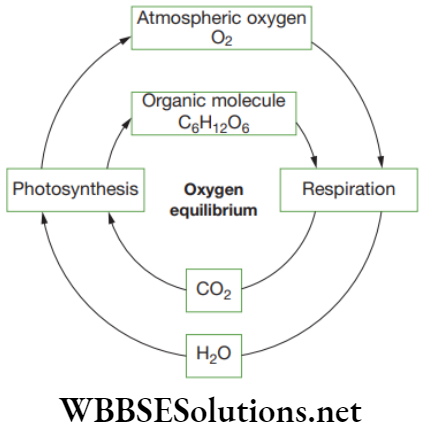
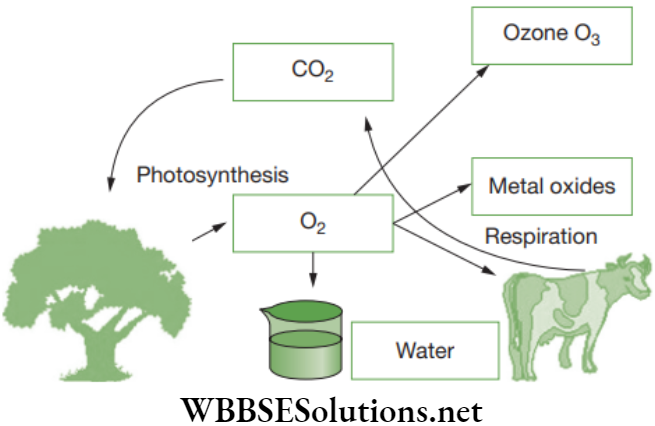
Carbon Cycle
Carbon is linked to energy flow because producers, and chemosynthetic bacteria require environmental energy to store carbon into sugars. In the carbon cycle, the compounds produced by manufacturers are used up by the consumers. Then, carbon from both consumers and producers is returned to the non-living environment as carbon dioxide through respiration.
Carbon accumulates in wood for several years, which is returned to the environment by the burning of fossils and through respiration by fungi, bacteria and other detrivores. Volcanic eruptions are also an important source of carbon dioxide release in the environment and therefore, this completes the cycle.
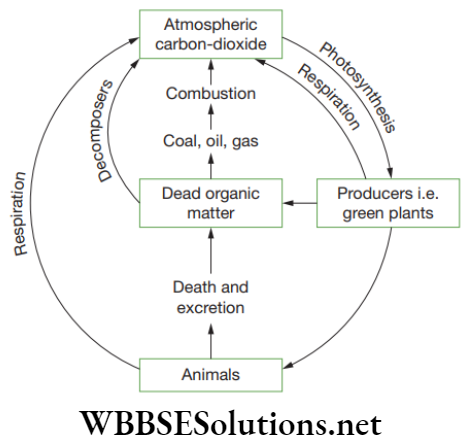
Carbon sinks: In some cases, cycling materials are stored into reservoirs or sinks and become unavailable to living organisms. The three reservoirs for the carbon are as follows.
- Transfer of carbon from organism to deposits of coal, peat and oil.
- Incorporation of carbon into carbonate rocks.
- Oceans also act as carbon reservoirs.
The atmosphere also contains two other forms of oxygen, namely as carbon monoxide and methane.
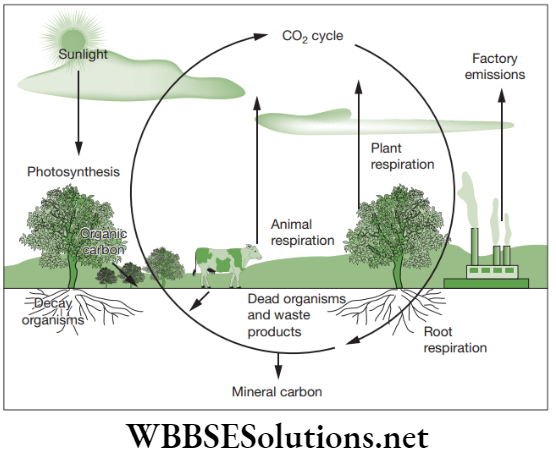
Chapter 5 Natural Resources Ozone Layer and Its Depletion
Ozone, an allotrope of oxygen is a triatomic blue-coloured gas with having pungent odour, which is highly poisonous to living organisms. Ozone is present in the stratosphere of the atmosphere. The density of the ozone layer varies from place to place being thickest at the high latitudes in the late summer and comparatively thinner over the tropics.
The part of the atmosphere rich in ozone concentration is known as the ozone layer, ozonosphere or ozone shield.
The ozone layer holds a vital role in the protection of the earth’s surface. It acts as a filter restricting the entry of high-energy ultraviolet rays from the sun. This high energy splits ozone into molecular and atomic oxygen.
Ozone Depleting Substances
These are the chemicals that reduce the concentration of ozone in the atmosphere. Examples: Chlorofluorocarbons (CFCs), halons, methyl bromide, nitrogen oxides and chlorine.
Effects of Ozone Depletion
The depletion of ozone makes an entry point for harmful ultraviolet rays to reach the surface of earth causing harmful effects on living beings and some of them are as follows.
- Skin cancer
- Damage to eyes.
- Damages immune system.
- Decreases crop yield.
- Formation of smog.
Chapter 5 Natural Resources Master Your Test Questions and Answers
Question 1. What is the ozone layer?
Answer: The part of the atmosphere rich in ozone concentration is known as the ozone layer, ozonosphere or ozone shield.
Question 2. What do you understand by the term biogeochemical?
Answer: The term ‘biogeochemical’ is described as the uptake of nutrient elements from the surface of the earth by living organisms to perform vital functions such as growth and metabolism.
Question 3. What are greenhouse gases?
Answer: Greenhouse gases include carbon dioxide, nitrogen dioxide, ozone and chlorofluorocarbons.
Question 4. What is the global water cycle?
Answer: Water from water bodies evaporates to form clouds which are blown over the land through winds. The collected water gets evaporated again from the reservoirs or ground to form through evaporation. The repeated cycle completes the global water cycle.
Question 5. What is nitrogen fixation?
Answer: The process of conversion is carried out either by industrial nitrogen fixation or nitrogen-fixing bacteria like Azotobacter and Rhizobium. These organisms convert atmospheric nitrogen into nitrates, which is the water-soluble form of nitrogen. This process of fixation is termed as nitrogen fixation.
Chapter 5 Natural Resources Track Your Learning Questions and Answers
Question 1. Which of the following is not an effect of ozone depletion?
- Skin cancer
- Poor digestion
- Damage to eyes
- Damages immune system
Answer. 2. Poor digestion
Question 2. Cycling materials are stored in reservoirs or sinks and become unavailable to living organisms, this process is called
- organic sink
- inorganic sink
- carbon sink
- phosphorus sink
Answer. 3. carbon sink
Question 3. What is the percentage of oxygen in air?
- 29
- 71
- 46
- 21
Answer. 4. 21
Question 4. Which of the following is the role of azotobacter in the soil?
- Nitrogen fixation
- Ammonification
- Nitrification
- Denitrification
Answer. 1. Nitrogen fixation
Chapter 5 Natural Resources Global Warming
The greenhouse is a building made up of glass to grow or shelter dedicated plants. The glass of the greenhouse is made in a way that it allows the entry of sun rays but restricts them from escaping from the glass walls. Carbon dioxide and water vapour inside it further capture heat to increase the warmth of the air inside the greenhouse.
The atmosphere acts similar to the glass walls of the greenhouse. The blanket of atmosphere allows only solar radiation to pass through it but restricts the escape of infrared rays from the earth’s surface. Greenhouse gases include carbon dioxide, nitrogen dioxide, ozone and chlorofluorocarbons.
These gases trap the heat reflected by the earth thereby, increasing the temperature of the earth. This phenomenon is referred to as global warming or the greenhouse effect.
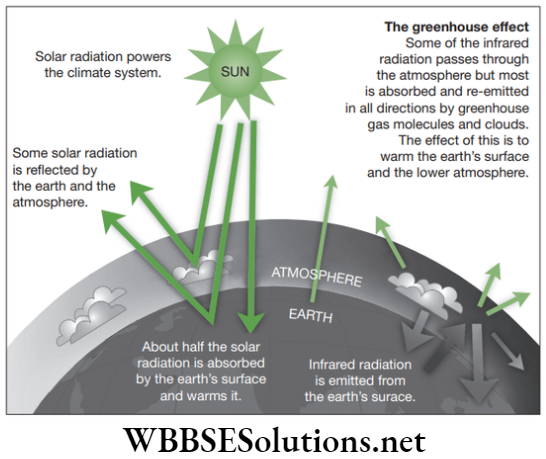
Effects of Global Warming
- The rise in temperature has led to the melting of glaciers thereby, increasing the level of the sea.
- Decrease in the production of crop due to eruption of plant diseases, pests and growth of weeds as a result of increase in the temperature.
- The increase in warmth of the atmosphere has led to the increase in the moisture carrying capacity of the air.
Chapter 5 Natural Resources Match the Columns
Question 1.
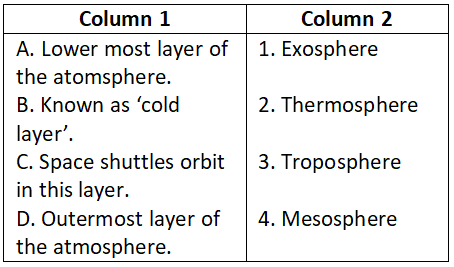
Select the correct option.
- A-3, B-1, C-2, D-4
- A-3, B-4, C-2, D-1
- A-2, B-4, C-3, D-1
- A-1, B-3, C-4, D-2
Answer. 2. A-3, B-4, C-2, D-1
Question 2.
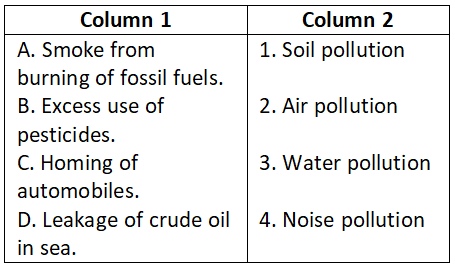
Select the correct option.
- A-3, B-1, C-4, D-2
- A-2, B-4, C-1, D-3
- A-2, B-1, C-4, D-3
- A-1, B-3, C-2, D-4
Answer. 3. A-2, B-1, C-4, D-3
Question 3.
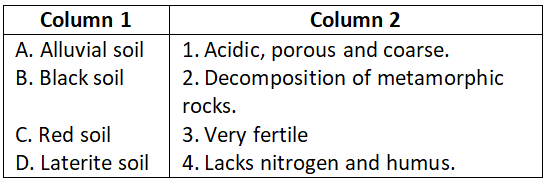
Select the correct option.
- A-3, B-4, C-2, D-1
- A-3, B-2, C-1, D-4
- A-2, B-4, C-1, D-3
- A-1, B-3, C-4, D-2
Answer. 1. A-3, B-4, C-2, D-1
Question 4.
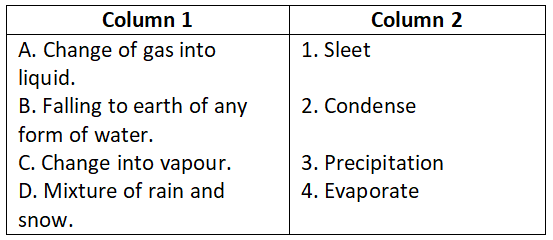
Select the correct option.
- A-3, B-1, C-4, D-2
- A-2, B-3, C-4, D-1
- A-1, B-3, C-2, D-4
- A-4, B-2, C-1, D-3
Answer. 2. A-2, B-3, C-4, D-1
Question 5.

Select the correct option:
- A-3, B-1, C-4, D-2
- A-2, B-3, C-4, D-1
- A-1, B-4, C-2, D-3
- A-2, B-4, C-1, D-3
Answer. 3. A-1, B-4, C-2, D-3

